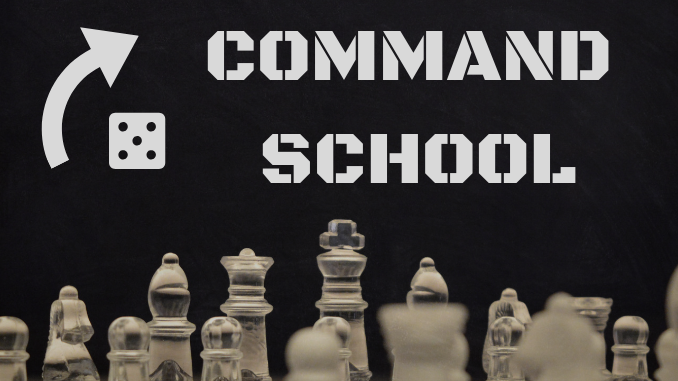
“All warfare is based on deception. Hence, when we are able to attack, we must seem unable; when using our forces, we must appear inactive; when we are near, we must make the enemy believe we are far away; when far away, we must make him believe we are near.” – Sun Tzu, Chapter I: Making of Plans, The Art of War
Why, hello there. Welcome to the third entry in my new series, Command School, which applies tactics and strategy to gaming. My first post dealt with how tactics and strategy differ and what that means for you at the table, while my second went into how to come up with different options to achieve your objectives.
Today, I lay down some clear truth on deception. I’ll give you a short primer on the fundamentals and then walk you through some examples with Star Wars Rebellion—just kidding, I’m switching it up this time with examples from Secret Hitler. Enjoy.
Deception
For our purposes, Deception is the application of measures designed to mislead through manipulation, distortion, or falsification of evidence to induce a desired reaction by another actor.
The number of ways and examples of deception are perhaps endless. I’ll provide a quick rundown of some fundamentals and techniques to serve as a guide, but I find history is the best teacher for this topic. Some examples worth googling are the Trojan Horse, the Siege of Fort Detroit, and Operation Bodyguard.
Deception Fundamentals
The following are some basic principles of deception.
- Aim and Objective: Identify exactly what you want your target to do, and why. Deception is not useful for its own sake.
- Reinforce Expectations: It is easier to deceive someone to believe what they expect.
- Identifiable: Your opponent cannot act on deceptive information they cannot or will not notice, they must discover the evidence somehow.
- Credibility: Deceptive information must look and feel like real evidence, both in type and in amount.
- Timely: Deception is best integrated early, giving your target enough time to take in the deceptive information and act upon it. You must also know plan for when the deception should end and your true objective is revealed.
- Risk: Deception may fail for a variety of reasons (target did not pick up on the deceptive evidence, target saw through the deception, target was deceived but acted in an unforeseen way) therefore the risk of the deception failing must be considered and planned for.
Deception Techniques
The following is a non-exhaustive list of possible deception techniques.
- Obvious Solution: Reinforce the target’s impression that you are using the obvious approach to achieving your goals.
- False Routine: Condition your target by repetition to expect a set routine, then break that routine suddenly to achieve your goals.
- Lure: Set a trap by presenting your target with what looks like a sudden or ideal opportunity, perhaps exposing some vulnerability, and then exploit their action.
- Mistake: Make your deception more credible by making it seem like you’ve divulged information accidentally.
- Substitution: Covertly substitute one thing for another while making it seem nothing has changed.
Explanatory Example: Secret Hitler
In Secret Hitler, fascist players hide among the liberals, conniving to pass fascist policies and elect Secret Hitler. Generally, liberal players will attempt to discover the identity of the fascist players to win this social deduction game. Fascists must carefully balance deception with instituting fascist policies to secure their victory condition.
The aim and objective are simple: fascists engage in deception to prevent liberals from opposing them. This allows them the time needed to pass fascist policies and/or make Secret Hitler the chancellor. Ideally, they appear like normal liberals.
This generally means providing credible indicators that reinforce expectations of how a liberal player would play. A routine has emerged in my group where a liberal president “checks” their chancellor by offering both a liberal and fascist policy for them. When the chancellor picks a liberal policy, I announce to the table, “okay, I gave him one and one, maybe we can trust him.” As a fascist president, I have passed as liberal by presenting this choice to a liberal chancellor on several occasions. This has often proved worthwhile even when I could’ve forced a fascist policy through, as I then later could cash in on the deception at a much more decisive point (timely).
One risky option is to draw attention away from the real Secret Hitler and onto a normal fascist or even an unsuspecting liberal. Perhaps this could be achieved through overeagerness to elect a certain individual chancellor, something that should immediately arouse liberal suspicions. This technique requires careful balancing, however, as laying the deception on too thick instead risks detection (credibility) while too thin risks it not being noticed (identifiable).
These are just a few examples that I hope illustrate how to think about these fundamentals and techniques.
Conclusion and Homework
For homework, think about the last time you were fooled in a game. How did they pull it off? Did they use any of the fundamentals and techniques I listed above? Feel free to share in the comments.
I’d also love to read any questions you may have or suggestions for future topics. Don’t be shy now.
Otherwise, and until next time, class dismissed.
Christopher Hunt
Latest posts by Christopher Hunt (see all)
- Command School – Deterrence and Compellence - July 11, 2019
